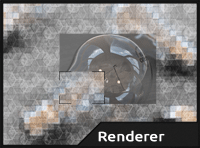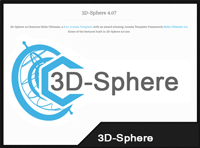 Di-O-Matic introduced their Real Time Marker less Facial Performance Capture solution, Maskarad RT for Autodesk MotionBuilder. With the same technology used in standalone version of Maskarad, Maskarad RT uses state-of-the-art technology to automatically locate and track head motion as well as facial expressions and precise lips movements without messy face markers and expensive hardware.
Di-O-Matic introduced their Real Time Marker less Facial Performance Capture solution, Maskarad RT for Autodesk MotionBuilder. With the same technology used in standalone version of Maskarad, Maskarad RT uses state-of-the-art technology to automatically locate and track head motion as well as facial expressions and precise lips movements without messy face markers and expensive hardware.
News
 At Blendercookie appeared a very interesting looking tutorial about rendering an interior scene in Blender 2.58 using LuxRender as render engine. The tutorial is about 45min long and during this time the author is explain everything what you should know about rendering a scene like this in LuxRender. Starting with creating textures and materials,
At Blendercookie appeared a very interesting looking tutorial about rendering an interior scene in Blender 2.58 using LuxRender as render engine. The tutorial is about 45min long and during this time the author is explain everything what you should know about rendering a scene like this in LuxRender. Starting with creating textures and materials,
 Rohan Dalvi published on CG portal 3Dtotal his new Making of called „Power Plant“. On 4 pages he describes his work on this project starting with an idea of an alien power plant and a sketch draw in Photoshop. He also describes his workflow and problems which he had to face during the process of making his project. He used Houdini to make trees for his power plant and later implement in 3DsMax where he finished his work.
Rohan Dalvi published on CG portal 3Dtotal his new Making of called „Power Plant“. On 4 pages he describes his work on this project starting with an idea of an alien power plant and a sketch draw in Photoshop. He also describes his workflow and problems which he had to face during the process of making his project. He used Houdini to make trees for his power plant and later implement in 3DsMax where he finished his work.
 Cebas released a new Service Pack 4 for their render engine for 3DsMax finalRender 3.5 as well for finalRender 3.5 SE. The new service packs brings with it several improvements and bug fixes which touched also finalToon , opening up a whole new world of illustration and cartoon rendering effects for 3ds max. The True Line Renderer (TLR) with unparalleled line quality and rendering speed, offers with this latest service pack even more than before. You can download the service pack from customer page at Cebas.
Cebas released a new Service Pack 4 for their render engine for 3DsMax finalRender 3.5 as well for finalRender 3.5 SE. The new service packs brings with it several improvements and bug fixes which touched also finalToon , opening up a whole new world of illustration and cartoon rendering effects for 3ds max. The True Line Renderer (TLR) with unparalleled line quality and rendering speed, offers with this latest service pack even more than before. You can download the service pack from customer page at Cebas.

Insidious Technologies has released a virtual texturing add-on for Unity Pro. According to Insidious, Amplify enables level artists to use large volumes of texture data without worrying about memory limits. Virtual texturing works by slicing large textures into smaller tiles. At runtime, only tiles visible to the camera are streamed from disk.
